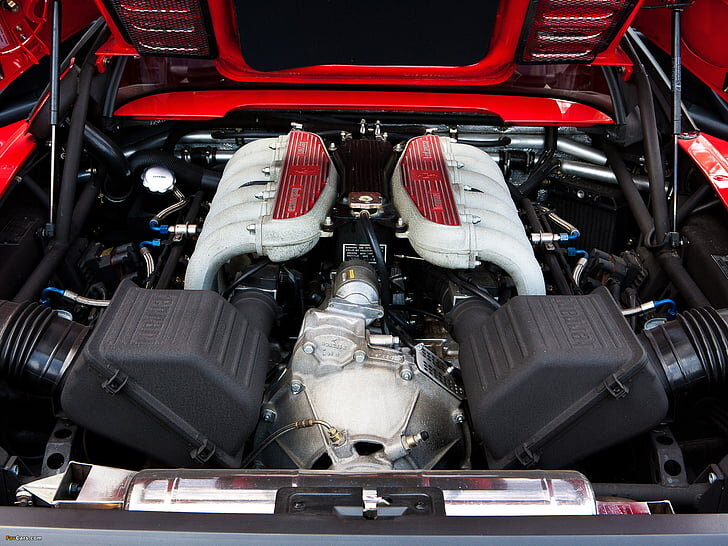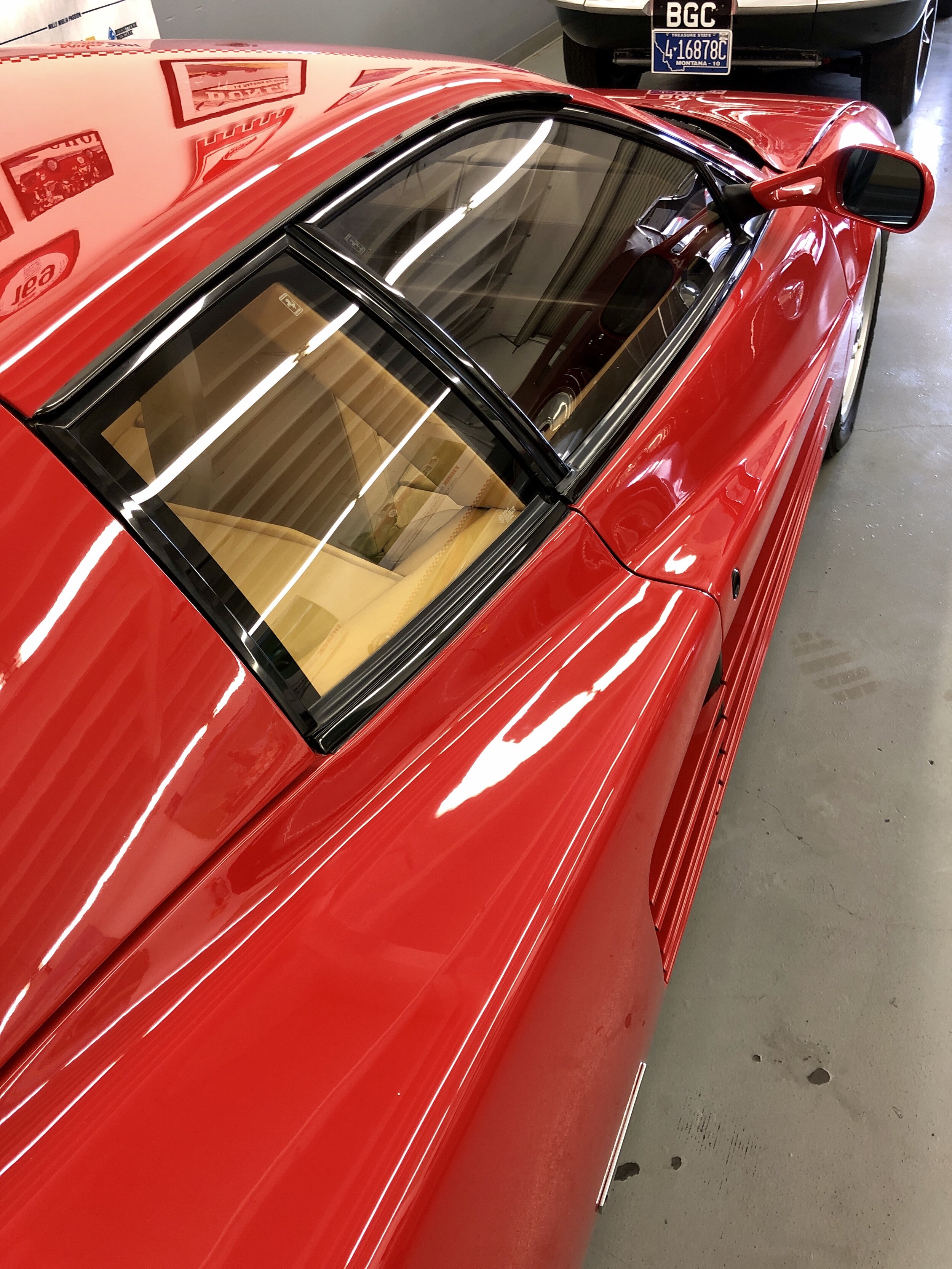Owning a Ferrari Testarossa
One of the most interesting aspects of the post-modern world is the fact that every new decade draws inspiration and imitates the style, fashion, and aesthetics from the recent past. You can call it the modern nostalgia or the retro, but the fact is that we already saw the revival of the '60s and '70s, both in music and design and the world is now in the midst of big '80s revival. Synthpop is in the charts again, neon esthetics are the latest designer craze, and car collectors are cashing in on perfectly preserved '80s icons. So, we feel that this is the perfect time to talk about one of the biggest automotive legends of the period and one of the most desirable sports cars of the era – the 1984 to 1991 Ferrari Testarossa.
Like every classic Ferrari, Testarossa also was the pinnacle of automotive engineering and design when it was released. Still, this model's importance lies in the fact that this Italian masterpiece was one of the rare cars that managed to transcend the car world's sealing and became a full-fledged cultural icon and one of the most recognizable symbols of the '80s. That is why the Testarossa is still relevant in 2021, not just because it is gorgeous to look at and fantastic to drive, but because it represents a statement of style and a deep understanding of modern culture and that era when MTV ruled cable TV.
The origin
Even though the Ferrari Testarossa was presented in the 1984 Paris Motor Show, the model's roots can be traced to the early '70s and Ferrari BB (Berlinetta Boxer), which was the first GT model from Maranello with a twelve-cylinder engine positioned behind the driver. The innovative concept might be strange at the time but provided the BB with exceptional road-holding and performance, thanks to a low center of gravity and almost ideal weight distribution. However, the BB proved to be far from perfect, and customers had numerous complaints.
So, in the early '80s, Enzo Ferrari assigned famous Pininfarina's stylist Leonardo Fioravanti as the chief designer and a team of experienced engineers and told them to use the idea behind the Berlinetta Boxer but improve it, make it faster, better, and more beautiful in every way. The legendary Ferrari boss was especially concentrated on making the Testarossa better for everyday driving and more comfortable since he wanted to show the customers that Ferrari is a more user-friendly company than its biggest rival, Lamborghini and its eponymous, but notoriously hard-to-live-with, Countach.
The design
The Testarossa was one of the biggest news in the car world in 1984, and rightfully so. The combination of aggressive elegance, perfectly balanced design, and imposing stance left Paris Motor Show audience breathless and utterly impressed. Enzo Ferrari was particular about design and wanted no spoilers on the car, possibly to further distinguish the Testarossa from the Countach. However, Fioravanti managed to provide it with a very aerodynamic shape (0.36 CW), eliminating the need for tacky add-ons and enhancing the performance, which definitely made "Commendatore" very happy.
In order to improve driving dynamics, accommodate the enormous flat-twelve engine and still provide enough space in the interior, Ferrari needed to make Testarossa significantly bigger, wider, and even slightly taller than its predecessor. A perfect example of "form follows the function," Testarossa had a noticeably wider rear track with the car's overall width at almost two meters. The wide rear was necessary since the twelve-cylinder engine was positioned between the rear wheels, over the rear axle, and behind the cabin, making this the only possible solution.
The front was dominated by mandatory '80s supercar design detail – pop up headlight and pointy nose hid decent-sized trunk. In order to maximize the available space, Ferrari delivered Testarossa with a bespoke, six-piece luggage set.
However, the most significant detail and the perfectly styled link between the wide rear and elegant front were those memorable side vents that rounded up the design and left an everlasting impression on anybody who ever laid eyes on Testarossa. Perfectly functional, the" "cheese graters" as they were called, channeled cool air to two big radiators mounted on each side, needed to cool down the massive 4.9-liter, twelve-cylinder engine. Also, due to smart aero engineering, hot air then exited the engine bay behind the car, creating a downforce effect and helped stability at high speeds.
With such gorgeous looks, dramatic presence, and almost jet-fighter stance, Testarossa was an instant classic and immediate hit with the wealthy customers rocking gold Rolex watches, Ray-Ban Wayfarers, white suits, mullets, and suitcases full of cash.
Engine and performance
The heart of the Testarossa was a very special 4.9-liter, naturally-aspirated, twelve-cylinder engine, which, even today, creates controversy amongst sports car fans. Numerous sources call this unit a flat-12, but in fact, it is a V12 engine with 180 degrees angle between the cylinder banks. It is based on the engine from Ferrari 512i BB, but it is thoroughly modernized with a new intake system and 4-valve per cylinder technology. Interestingly, the name" "Testarossa" was a nod to legendary Le Mans-winning 250 TR racing cars of the late '50s and '60s. Since it literarily means "Red Head" in Italian, the Testarossa had cylinder heads appropriately painted red.
The result was 380 hp and 361 lb-ft of torque, astonishing figures by mid ‘80s standards. The power was sent to the rear wheels, over a 5-speed manual transaxle gearbox, with a gated shifter, of course. The factory declared 0 to 60 mph acceleration time of 5.6 seconds and a top speed of 180 mph, even though some magazine testers managed to achieve better results. However, Testarossa was a blisteringly fast and capable automobile, faster than comparable Lamborghinis and Porsches of the era.
Driving dynamics
Even though every Testarossa's component, from dramatic design, over supercar drive train and impressive performance, was carefully crafted and well-thought-of, only when you sit behind the wheel and unleash all of 380 angry stallions you realize that this Ferrari is greater than the sum of its parts. With signature Italian driving position (laid back with arms stretched forward), comfy cabin, and solid visibility, considering the rear-engine layout, Testarossa stays true to its Gran Turismo ideals. This means that the ride is firm but not harsh and that there is enough space in the interior, even for taller drivers.
At slow speed, the car might feel heavy, and there is a good reason for that. All models came without power-assisted steering, which made parallel parking a nightmare, especially in combination with restricted visibility and the car's enormous width. However, once you are moving, the Testarossa really shines with fantastic handling thanks to a low-mounted twelve-cylinder engine and sharp steering with a pure and gorgeous mechanical feel.
Some testers even called Testarossa a “big Go-Kart” due to its flat handling and slightly rear-biased weight distribution. With double wishbone suspension all around, wide track, and pretty chunky (for the times) 255-section rear tires, the car stays flat no matter how hard you push it into a corner with no sign of oversteer.
Such sublime driving characteristics promoted Testarossa into one of the best Gran Turismo coupes of its generation. With enough space in the interior, composed ride, and high performance, this Ferrari could be used daily or on long-distance trips, if the owner managed to avoid tight parking spaces and get used to an average 11 mpg fuel consumption. However, all sacrifices in the form of fossil fuels are well worth it when you hear the mechanical symphony of naturally aspirated twelve-cylinder singing through that quad exhaust.
The legacy
The original Ferrari Testarossa was produced from 1984 to 1991 and changed very little during that time. With a base price of $94,000 in 1985 (around $230,000 in today's money), Testarossa was a very expensive but immensely popular with the '80s jet set. The list of celebrity owners included singers, athletes, and famous movie stars. However, its appearance in the hit TV show" "Miami Vice" cemented its part as the quintessential sports car of the decade and street décor of the ‘80s Miami cocaine culture. During the 7-year production run, Ferrari managed to deliver precisely 7,177 cars, which is an astonishing achievement considering each example's bespoke nature. All Testarossas were coupes, except for one silver convertible, custom made for Fiat chairman, charismatic Giovani Agnelli.
————
Fancy a day behind the wheel of a Ferrari Testarossa? Registration is now open for our Ferrari Testarossa Driving Experience!





